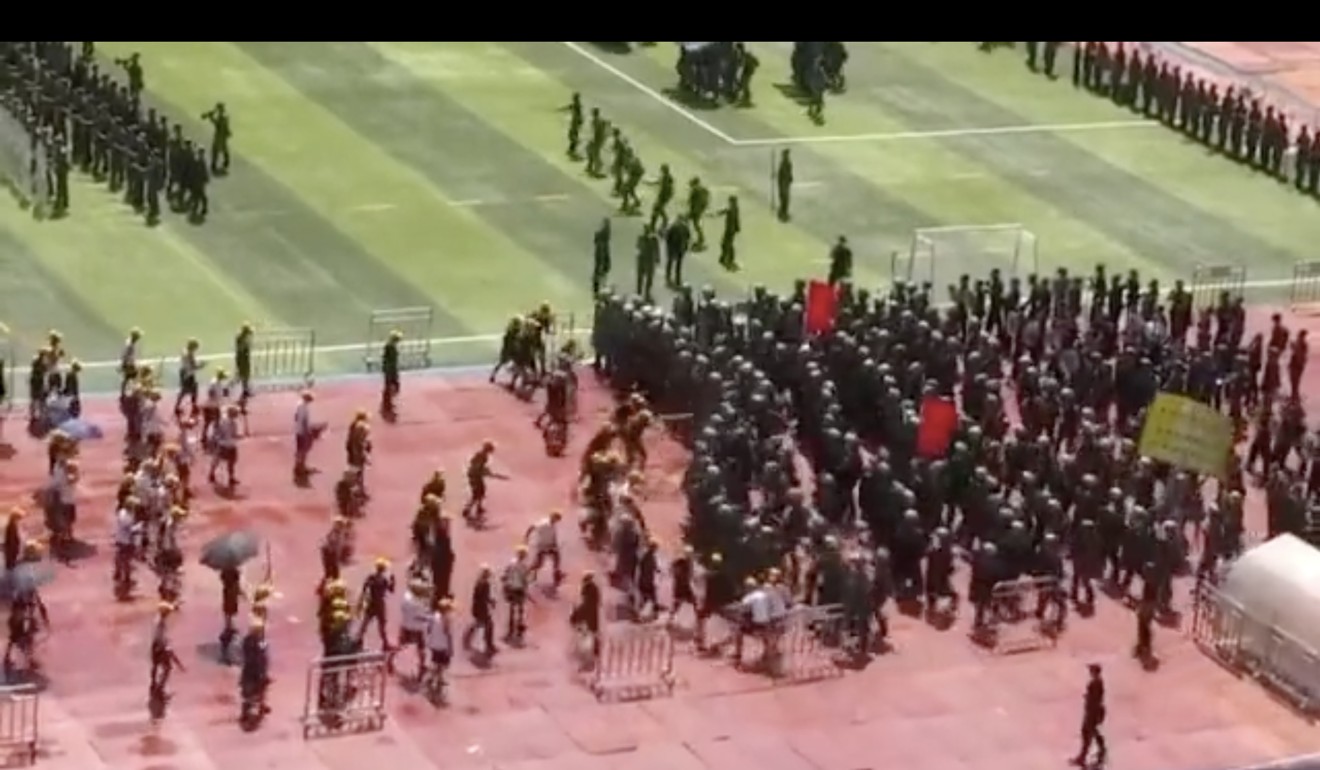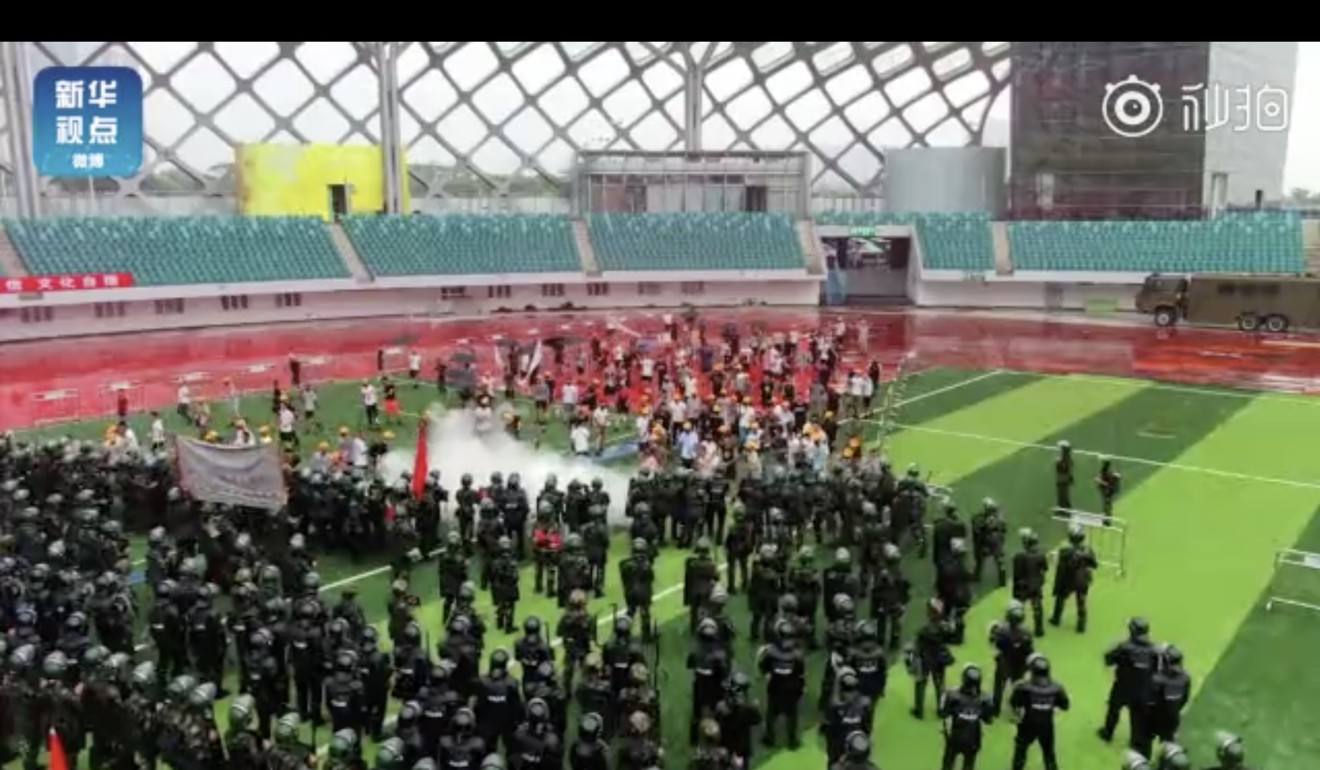
China’s paramilitary force staged a new anti-riot drill in Shenzhen on Thursday, with exercises mirroring the ongoing anti-government protests in Hong Kong, mainland Chinese media reported.
The drill, held in a sports stadium in Shenzhen, which borders Hong Kong, involved hundreds of armed officers clashing with people acting as protesters, according to Global Times, a nationalist tabloid published under the auspices of Communist Party mouthpiece People’s Daily.
A video with the report shows some “protesters” striking the armed officers with batons, and two water cannon deployed to spray them. Petrol bombs are thrown by “rioters” and extinguished by the armed officers.
Officers also hold up two red flags to warn protesters in footage of the drill, held at Shenzhen Bay Sports Centre. After the rioters retreat, police trucks surround them, ending the “riot”.

Drills by China’s armed forces have become more conspicuous as protests have continued in Hong Kong, triggered in early June by a now-shelved extradition bill that would have allowed the transfer of criminal suspects to mainland China. Some of the protests have resulted in violent clashes between protesters and police.
Beijing-based military expert Zhou Chenming said Thursday’s drill represented a warning to the city. “There will be some protests this weekend and the drill in Shenzhen was intended to be a deterrent,” Zhou said.
“It doesn’t mean Shenzhen will send paramilitary police to Hong Kong to help. The central government still believes Hong Kong police are more capable and experienced than their Shenzhen counterparts to deal with the riots.”
Ren Guoqiang, a spokesman for the Chinese defence ministry in Beijing, said on Thursday that the paramilitary force regularly conducted training on maintaining social stability.

“It is the mission of the People’s Armed Police to help maintain national security, social stability and life of the people, and political security, especially security of the regime,” Ren said.
The People’s Armed Police is a paramilitary force under the command of the Central Military Commission, which oversees the nation’s armed forces.
Two weeks ago, the armed police force held an anti-riot exercise in Shenzhen, with one officer shouting to the crowd in Cantonese – the main language of Hong Kong – that the protesters should “stop violence and repent”. Tear gas was used.
The latest drill came on the same day as the People’s Liberation Army’s Hong Kong Garrison staged what it called a routine troop rotation and vowed to help maintain the city’s prosperity and stability.
After army and navy forces entered Hong Kong before sunrise, armed helicopters from the garrison’s air forces flew into the city in daylight on Thursday morning.
Photos released by state news agency Xinhua showed that the garrison had changed its armoured vehicles, of which it has about 50, from a military model to the type used by armed police for anti-riot purposes.
Hong Kong-based military observer Liang Guoliang said the change suggested the garrison was ready for anti-riot missions if required.
“Pictures showed that the anti-aircraft machine guns found on the military versions of the vehicles had been dismantled when they entered Hong Kong, suggesting that the eight-person vehicles could load extra troops for anti-riot missions,” Liang said.
Beijing military expert Zhou said the anti-riot armoured vehicles were a more practical choice in Hong Kong, but this did not mean their deployment was imminent.
“The garrison is now better prepared and well equipped, but I should emphasise that the garrison troops will not leave their barracks to take part in anti-riot missions unless the Hong Kong government requests them to,” he said.
Additional reporting by Minnie Chan







